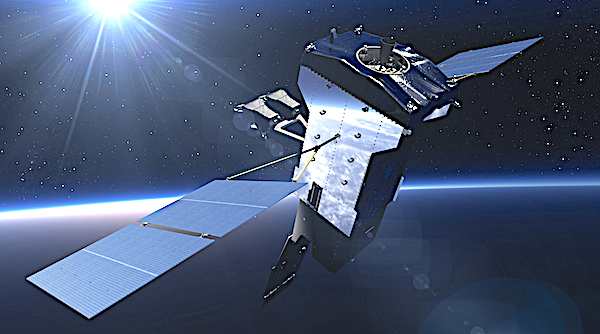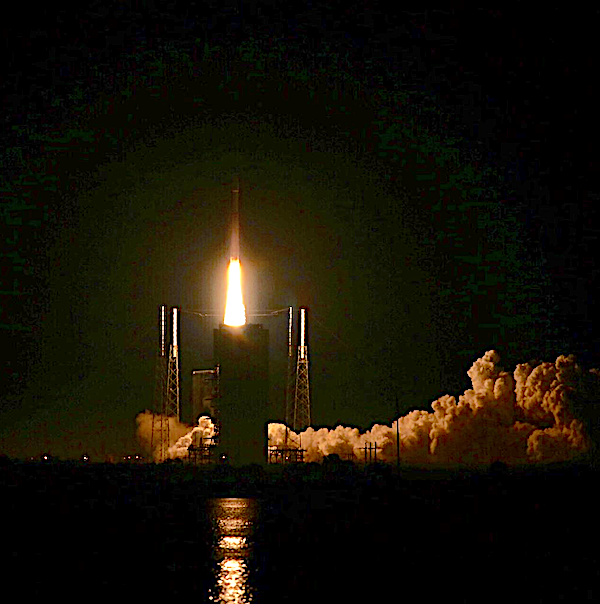
The Lockheed Martin built-SBIRS GEO Flight-4 satellite was launched at 7:48 p.m. EST on Jan. 19.
The Strategic Missile Warning Ground and Integration Acquisition Delta at Space Systems Command, in partnership with Space Operation Command’s Mission Delta 4, achieved Operational Acceptance for the Space Based Infrared System (SBIRS) Survivable Endurable Evolution (S2E2) program on April 25, 2025. This milestone represents a significant leap forward in ensuring U.S. missile warning systems remain operational and resilient in contested and degraded environments.
S2E2 replaces the legacy Air National Guard-operated Mobile Ground System (MGS), originally developed in the 1960s to support Defense Support Program (DSP) operations, with a modern, transportable ground station capable of processing data from the SBIRS and nuclear detonation (NUDET) detection systems. By integrating SBIRS Mobile Ground Terminals and Universal Ground Nuclear Detection Terminals, S2E2 substantially advances capability, survivability, and operational flexibility.

“The S2E2 Operational Acceptance marks a significant leap forward in our ability to provide resilient, uninterrupted missile warning and nuclear detection in the most challenging environments,” said Lt. Col. Jonathan Wilson, SSC materiel leader. “This achievement strengthens the backbone of our national defense and maintains the U.S. strategic advantage in an ever-evolving threat environment.”
Operational Acceptance is a key milestone in military acquisition that marks when a system or weapon is deemed acceptable for employment in an operational capacity and the approval authority declares the new system able to support its operational mission, which will be overseen by SpOC’s MD4.
“S2E2 is the first survivable and endurable system with built-in command and control capabilities designed to function through contested and degraded conditions,” said Capt. Connor Dejac, SSC fielding program manager, Infrastructure Branch. “This ensures our warfighters continue receiving timely, accurate information to make rapid, informed decisions when it matters most.”

The Lockheed Martin built-SBIRS GEO Flight-4 satellite was launched at 7:48 p.m. EST on Jan. 19.
Designed to operate through all phases of a conflict, S2E2 reinforces the endurance and resilience of the nation’s missile warning architecture, supporting a foundational mission of the U.S. Space Force and its joint and allied partners.
“S2E2 will deliver the first-ever high data rate missile warning messages, enabling faster and more detailed transmission of critical data,” said Capt. Morgan Records, SSC deputy program manager, Infrastructure Branch. “This means national command authorities will receive high-fidelity missile warning and NUDET information with greater speed and accuracy than ever before.”
By fusing data from satellite-based sensors with ground-based processing, S2E2 provides critical, real-time threat information to enable rapid decision-making during missile or nuclear events. It directly supports national defense systems and ensures the United States maintains a credible, responsive posture in the face of evolving strategic threats.
“Space and Cyber operators across the service responsible for fielding S2E2 are distinctly capable, well-trained, and combat-ready in five discrete mission areas; committed to providing lethal, real-world effects to combatant commands in support of critical national defense priorities,” said 1st Lt. Nathaniel Hatfield, mission officer in charge, Buckley Space Force Base, Colorado.
S2E2 also delivers a space-based situational monitoring capability that plays a vital role in the U.S. Nuclear Command and Control (NC2) architecture. It provides first-alert missile warning to U.S. and allied forces and includes GPS-based NUDET detection, a critical element for attack attribution and re-strike planning.
S2E2 supports several key national-level architectures, including the Integrated Tactical Warning and Attack Assessment System, Critical Nodes identified by the Chairman of the Joint Chiefs of Staff, and the Nuclear Command and Control System.
